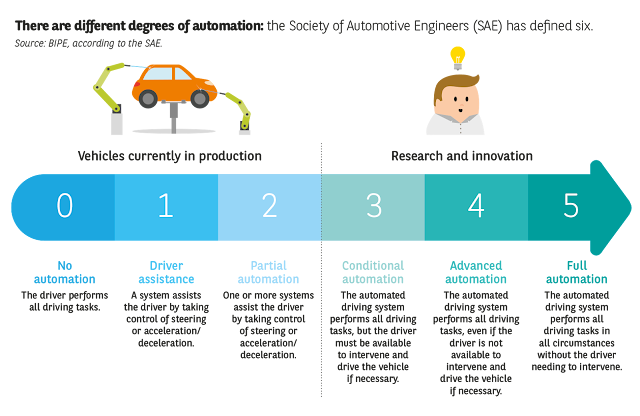Posts
5 – Law
- Get link
- X
- Other Apps
Beyond the benefits of a hightech society, every machines created to be more efficient apparently help human do less work. As the hightech era continuingly advance broader into transportation, it calls the name of “Autonomous vehicle” or “Driverless vehicle”. Technically, by its name, the car drives itself and the passengers without a driver’s manipulation which brings controversies between people who want ultimate convenience and ones care about their survivals. Especially, legislators will be facing a much more complicated puzzle not only traffic issue, but also economy, environment, etc. There are hardly any governments that have done a particular research or released regulatory framework to sort out the vehicle technology. The U.S department of transportation specifically issued 15 point Federal policy of automated vehicles regarding the expectations for manufacturers deploying and developing these vehicles. Each year, the number of states considering legislation related to aut...
4 – Personality and Teamwork
- Get link
- X
- Other Apps

EXTRAVERSION Activity Level: You likely find yourself alternating between managing multiple activities at once and finding time to take it easy and relax. Continue to avoid the stress of always being on the go while considering ways you can best utilize your energy to contribute to the team tasks. Assertiveness: You sometimes like to take the lead in a group setting, but are also comfortable allowing others to take charge in a team. Be aware of times when you should speak your mind or take the lead but also be mindful of situations where you should take a step back and let others contribute. Cheerfulness: You tend to be joyful and optimistic, but also know when to be serious about accomplishing the team's work. Continue to adapt your behavior to best suit the situation, whether that means sharing a laugh with friends or focusing on the task. Excitement-Seeking: You enjoy your fair share of excitement but within reason. Take advantage of your flexibility to help your team ...
3 - Ethical
- Get link
- X
- Other Apps
If there was an accident,the caution could come from both sides.For Carlos’ injury,it can be devided into 2 cases. Firstly, Alice have to be take responsibility for the accident because Alice was driving the seat in the car which made Carlos injure. May be Alice did not drive it,but she directly controlled the mode of the car.She could not deeply understand this mode,so this is her fault.(What she have to do in emergency?) Secondly, the mistake may be from Carlos-who was jaywalking. Did he walk in the right lane? Or he may suddenly appeared in front of Alice’s car and she couldn’t handle to save both herself and Carlos. Similar to other accident,the police will have their way to investigate. However, Alice’s car is more special because it is an autonomous vehicle-many actured by Bob thanks to technology,human can meet many demands but everything is two sided.Avs is one of the new problem that’s easy come into argument.Carlos’s injury is a typical example.This concequence mi...
2 - Technology
- Get link
- X
- Other Apps

# Different types of technology in autonomous vehicle: Autonomous Vehicles (AVs) use combinations of technologies and sensors to sense the roadway, other vehicles, and objects on and along the roadway. The key technologies and sensors are described in the figure below. * A combination of sensors: Cameras are a relatively inexpensive type of sensor that can provide the basic visual information a human would gather as he or she drive; multiple cameras are used to provide depth of field. Radar (Radio detection and ranging) already used for certain level 1 vehicle controls; Both short-range and long-range automotive-grade RADARs are used (mostly in the narrow-band i.e. 27–77 GHz) for AD applications. Short-range radars, as the name indicates, ‘senses’ the environment in the vicinity of a car (~30m) and, especially at low speeds; whereas, long-range radars cover relatively long distances (~200m) usually at high speeds. Generally, the radar sensor acquires inform...
1 – Introduction
- Get link
- X
- Other Apps

#SAE International has a formal classification system for autonomous vehicles, ranging from level 0 (not automated) to level 5 (fully automated), specificly: Level 0 (No automation) : The car is totally controlled by the drivers . But there can be some warning systems (blind-spot and collision warnings). Level 1 (Driver assistance) : In this level, v ehicles can handle one task such as steering, throttle, or braking, but not in all circumstances, and the driver must be ready to take over those functions if called upon by the vehicle. Level 2 (Partial assistance) : The car can handle much more than one task( steering, throttle, and braking ) but immediately let the driver take over if he detects objects and events the car is not responding to: the surroundings, traffic, weather, and road conditions. Level 3 (Conditional assistance) : The car monitors surroundings and takes care of all steering, throttle, and braking in certain environments, such as ...